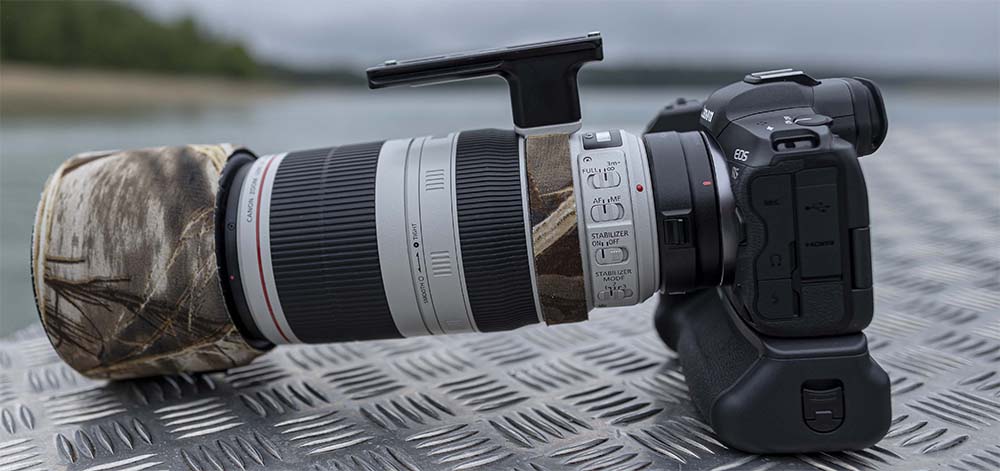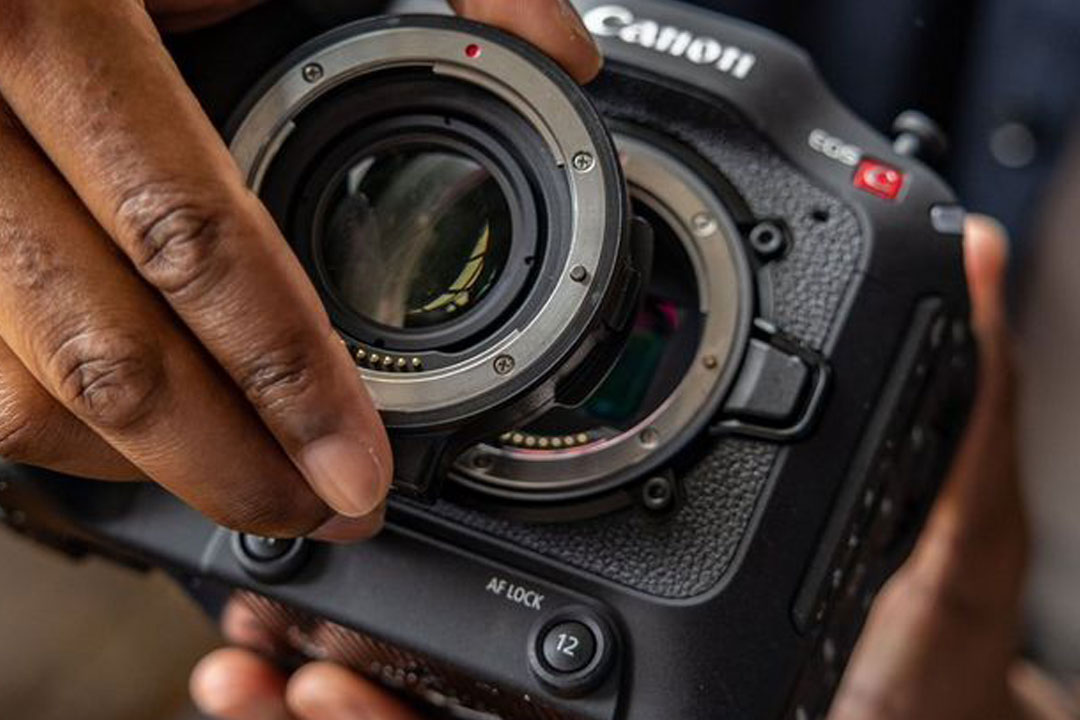Tempted by the new Canon EOS R mirrorless cameras but worried about all your Canon EF lenses gathering dust? In this article, we’re going to be running through the adapter options for mounting EF lenses to EOS R bodies and explain how you really can get the best of both worlds.
We know that it does sound too good to be true. The idea that you might be able to bring all any old EF lenses with you when migrating to a new system, and have everything work just as it’s designed to may seem a pipe dream.
Photographers have been swapping lenses between systems for many, many years now, but it is generally accepted that this will involve a trade-off in terms of features and functionality. Things like autofocus or image stabilisation will either work less effectively than usual, or simply not work at all.
Canon’s new EOS R system, however, is a different story.
With the introduction of the full-frame mirrorless cameras such as the Canon EOS R. Canon turned many heads and signified that it was taking mirrorless seriously. This was a serious tool for serious professionals, and was clearly built and marketed as such – but many pros worried about their considerable collections of EF compatible lenses. Was Canon asking them to effectively throw these investments in the trash and start again?
Short answer: no.

Do Canon EF lenses work with EOS R camera bodies?
It was a given that Canon would produce an EF to EOS R adapter, however what’s impressive is just how comprehensive a job they’ve done of ensuring the lens and cameras can communicate.
This is not a coincidence. Canon has specifically designed the EF and RF systems to be what it calls “bilingual”. When most lenses are adapted between systems, the device is converting the electronic signals from one device to the other.
Even when the communication is sophisticated enough for the devices to understand each other thanks to the latest firmware updates, it still has an inherent latency, which causes lag and impacts on performance. On EF-EOS R adapters, the information can pass straight through.
What this means in practice is that, for the vast majority of models, everything that your EF lens can do on an EOS body, it can also do on an EOS R body when they are connected using an adapter. Indeed, now that the cameras have been around for a couple of years, photographers have been able to test them out. Some are even reporting that, anecdotally, their EF lenses seem to perform better with the Canon R, with faster autofocus.
The Canon EOS R bodies are able to store a large number of lens profiles in their internal memory, allowing them to correct known aberrations and distortions in many EF lenses, back to the 1990s. This functionality can be disabled if you don’t require it and it won’t overpower the character of an old lens if you’re going for a specific “look” over technical perfection.
The compatibility really does extend right across the range of EF lenses. You might be wondering, out of more than 150 EF lenses made by Canon, how many have functions that don’t work when they’re paired with EOS R bodies? Answer: eight.
In all cases, it’s a pretty minor thing – the Canon EF 35-80mm f/4-5.6 PZ lens from 1991 can’t use its Power Zoom when paired with EOS R, and the AF Stop button doesn’t work on seven telephoto prime lenses from the late 90s and early 00s. In all other respects, EF lenses work on EOS R bodies exactly as they were designed to work on the original DSLRs.

EF-EOS R adapters
The EF-EOS R adapter range is made up of three models, each of which is a little different. Let’s take a look at the main features of each one…
Canon EF-EOS R Mount Adapter
This is the simplest, most affordable mount adapter for converting EF lenses to EOS R bodies. It allows for full communication between lens and camera, meaning all functionality like AF points and image stabilisation will work as advertised.
Lightweight and compact, the EF-EOS R mount adapter contains no optical elements, so it won’t compromise the quality of even the sharpest L-series lenses. It’s also dust- and water-resistant, so if you’re using the more rugged lenses in harsh weather conditions, the adapter won’t be a weak spot in your setup.
Canon Control Ring Mount Adapter EF-EOS R
Similarly to the standard EF-EOS R Mount Adapter, the Canon Control Ring Mount Adapter EF-EOS R converts EF lenses to EOS R bodies with no lag or optical elements to compromise quality, and is also equipped with weather sealing.
The key difference, as the name implies, is that this Canon EF adapter comes with a customisable control ring, and it’s not hard to see why many photographers say this is their favourite of the three adapters. Adding a lens control ring to the setup makes using the lens incredibly intuitive. What’s especially good about this adapter is the extent to which the control ring can be customised to the individual user’s preference – essentially it mirrors the control ring found on native RF lenses.
The control ring can be programmed to adjust all the major settings, including shutter speed, ISO, aperture, exposure compensation and white balance. The ring can be set to change values positively or negatively when it’s turned to the right or left. It can also be set to only kick in when the shutter button is half-depressed, if you’re concerned about accidentally knocking it at a crucial moment.
Canon Drop-In Filter Mount Adapter EF-EOS R
The third option of mount adapters for EF-EOS R is an interesting one, allowing for the use of a select number of drop-in filters. This is especially useful if you’re planning to shoot with a lot of larger lenses or wide-angles with a bulbous front element that doesn’t allow for the easy attachment of filters on the front.
While it doesn’t have the control ring option, this adapter does have all the functionality of the other adapters – it retains full autofocus and image stabilisation capabilities of the attached lenses, and also has the same dust- and weatherproofing.
Below are the filters you can use with this mount adapter
Canon Drop-In Variable ND Filter A: This variable ND gives you tremendous flexibility in controlling the amount of light reaching the camera, with a variable ND effect that runs from 1.5 stops all the way up to 9 stops. Use wider apertures or slower shutter speeds even in bright light conditions, and easily alter the intensity of the ND effect with the rotating wheel.
Canon Drop-In Circular Polarizing Filter A: Minimise reflections and glare with this drop-in polariser, which also has a rotating wheel that allows the user to modulate the intensity of the polarising effect. Made with high-quality glass, it ensures that the final image is still pin-sharp
Canon Drop-In CL Filter: This is a clear filter that’s used if you want to use the adapter without any of the above filter effects. Made from high-quality glass, it’s designed to effectively transmit light without any additional effects. This is useful if you want to have the option of using or not using the Drop-In filters without having the hassle of buying multiple adapters.
So the reality is that the best of both worlds truly is possible! We hope you’re encouraged to see the possibilities of shooting with EF glass and EOS R bodies, but if you have any further questions, don’t hesitate to get in touch with our team! You can email sales@fixationuk.com or call 020 7582 3294


